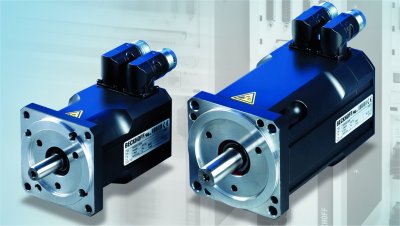High-inertia servos tackle the problem of increasing loads
Bucking the trend towards lower moments of inertia, Beckhoff has produced a range of servomotors with increased moments of inertia. The company argues that this will make the motors ideal for high-inertia applications, such as rotary tables, without needing extra gears, and for machine tool axes with precise synchronism requirements.

Most servomotors are designed to produce as much torque as possible, from as compact a frame as possible. But, argues Beckhoff, the trend is for loads to become larger. This means that the inertia ratio between the load and the motor is becoming worse, resulting in poorer control and, in extreme cases, unstable mechanical systems. For highly dynamic applications, this ratio should not exceed 5:1. If it is larger than 10:1, the application may need to be redesigned.
Although the inertia ratio can be improved by using gears, this reduces top speeds so that, in many cases, the required velocity cannot be achieved - with the result that a larger motor and controller are needed, according to Beckhoff. The company claims that its new AM3500 series of high-inertia motors will solve this problem.
The motors cover the speed range 3,000-6,000 rpm and the torque range 1.9-15Nm. They incorporate pole-wound stator windings, resulting in compact dimensions. The motors are available with resolvers or absolute encoders, and are protected to IP64 as standard - with IP65/67 as an option.





